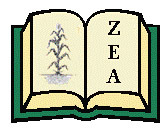
Zea E-Books Collection
Files
Download Full Text (43.7 MB)
Description
The aim of the present study is to contextualize a collection of Maya artifacts that have been kept for 125 years at the University of Ghent, in Belgium. The objects came from one of the first archaeological excavations carried out in Guatemala, between 1880 and 1900. The collection includes 130 pottery pieces, 64 jadeite pieces, 24 stone objects (serpentine, silex, and other stones), and 52 obsidian pieces. The study started in 2016, with the identification and location of the provenance site, which was visited in 2017. The phases of documentation and photographic registration of the objects were completed in 2019. It is the intention to digitize the collection and make it available to scholars for further research. This report presents a brief description of the site, Chich’en, and analyzes aspects of its geographical environment, as well as the historical and religious context that determined its relevance from the Classic period to the Late Postclassic and the early colonial period. A selection of the objects is presented, and outstanding iconographic elements are analyzed. The analysis is based on a bibliography review in the fields of archaeology, history, and ethnology in the Maya region and in Mesoamerica in general.
It is extraordinary to find an extensive collection of Maya archaeological artifacts in the reserves of a university museum, and a privilege to study them. These artifacts hold a wealth of information about the archaeological site Chich’en, where they were excavated 126 years ago. They enlighten the role of this site in the history of Verapaz (ancient Tezulutlán), strategically situated between the Northern Highlands and the Lowlands of Guatemala. Little is known about the history of this region. We are fortunate to lean on the research carried out by countless scholars in various disciplines to guide us in our search for answers to the many questions. Making this collection accessible for collaborative study should ensure that this cultural heritage will not remain silent nor stay forgotten.
CONTENTS
1. FOREWORD
2. INTRODUCTION
3. SETTLEMENT PATTERNS OF THE GUATEMALAN HIGHLANDS
4. ARCHAEOLOGICAL SITE • 1. Archaeological surveys of Chich’en • 2. Geographical setting • 3. Sacred landscape • 4. Name of the site • 5. Ancient trade routes in the Maya area • 6. Pilgrimage routes • 7. Brief description of the site • 8. Current situation of the site (2017) • 9. Habitat and society of Chich’en from the Late Classic to the Postclassic period
5. EARLY COLONIAL PERIOD — 1. Spanish military campaigns • 2. Arrival of the Dominican friars to Tezulutlán • 3. Foundation of San Juan Chamelco • 4. Foundation of Santo Domingo de Cobán • 5. Visit of the Q’eqchi’ lords to the Spanish Court • 6. Last days of Don Juan Matac (Matal) B’atz • 7. Continuity and identity
6. EXCAVATION OF GEORGES LÉGER IN 1894
7. GENERAL DESCRIPTION OF THE CHICH’EN COLLECTION
8. ICONOGRAPHIC ANALYSIS — 1. Representation of deities • 1.1. K’awiil • 1.2. K’awiil / Itzamnaaj • 1.3. Jaguar God of the Underworld • 1.4. One Ixim / One Ajan, the Maize God • 2. Royalty attributes • 2.1. The mat or jal-sign • 2.2. Jade ornaments • 2.3. Feathers • 2.4. “Maya blue” • 3. Symbolism of the ballcourt
9. PRELIMINARY CONCLUSIONS
10. FINAL COMMENT
11. NOTES
12. REFERENCES
13. ANNEXES—1. Georges Léger’s letter and field notes • 2. Hieroglyphic inscriptions: An interpretation by Rogelio Valencia Rivera • 3. Registration numbers and measurements of the artifacts • 4. Artifacts in other Maya collections resembling pieces from Chich’en
14. ILLUSTRATION CREDITS
15. ACKNOWLEDGMENTS
doi:10.32873/unl.dc.zea.1274
ISBN
ISBN: 978-1-60962-188-9
Publication Date
12-2020
Publisher
Zea Books
City
Lincoln, Nebraska
Disciplines
American Material Culture | History of Art, Architecture, and Archaeology | Indigenous Studies | Latin American Languages and Societies | Museum Studies | Other History of Art, Architecture, and Archaeology | Race, Ethnicity and Post-Colonial Studies
Recommended Citation
Montoya, Julia, "Contextualizing a Maya Collection from Alta Verapaz, Guatemala, at the University of Ghent, Belgium" (2020). Zea E-Books Collection. 98.
https://digitalcommons.unl.edu/zeabook/98

Included in
American Material Culture Commons, Indigenous Studies Commons, Latin American Languages and Societies Commons, Museum Studies Commons, Other History of Art, Architecture, and Archaeology Commons


Comments
Copyright © 2020 Julia Montoya